I. Introduction of Atlas Copco Compressor
Atlas air compressors are widely recognized as one of the best brands of air compressors on the market. They are known for their durability, reliability, and high-quality performance. Atlas air compressors are available in different types, sizes, and models, each designed to meet specific requirements and applications.

Understanding the different models and their specifications is crucial in choosing the right Atlas air compressor for your needs. By knowing what each model offers, you can select the one that matches your application requirements and ensures efficient and reliable performance.
In this article, we will provide a comprehensive guide to interpreting Atlas air compressor models and their specifications. We will cover different types of Atlas air compressors, how to understand Atlas air compressor model numbers and interpret specifications such as horsepower, CFM, PSI, tank size, duty cycle, voltage, and phase. We will also provide insights on choosing the right Atlas air compressor model for your specific needs.
II. Types of Atlas Air Compressor Models
Atlas air compressors are available in three main types: reciprocating air compressors, rotary screw air compressors, and centrifugal air compressors. Each type has its unique features, advantages, and disadvantages. Understanding the differences between them is important when choosing the right Atlas air compressor model for your needs.
A. Reciprocating air compressors
Reciprocating air compressors are also known as piston compressors. They use pistons and cylinders to compress air, which is then stored in a tank until needed. Reciprocating compressors are suitable for applications that require intermittent air supply, such as powering air tools, filling tires, and other small-scale industrial applications.
B. Rotary screw air compressors
Rotary screw air compressors use two rotors to compress air, which is then stored in a tank until needed. These compressors are known for their continuous and consistent air supply, making them suitable for large-scale industrial applications that require a constant air supply.
C. Centrifugal air compressors
Centrifugal air compressors use a high-speed impeller to compress air, which is then cooled and stored in a tank until needed. These compressors are known for their high CFM (cubic feet per minute) output, making them suitable for large-scale industrial applications that require a high volume of compressed air.
III. Understanding Atlas Copco Air Compressor Model Numbers
Atlas air compressor models are designated by a specific model number that indicates important information about the compressor, such as its horsepower, tank size, and voltage requirements. Understanding the model number breakdown is essential when choosing the right Atlas air compressor model for your needs.
Atlas oil injection screw air compressor
Industrial frequency machine G series, power 4-90kw (4, 5, 7, 11, 15, 18, 22, 30, 37, 45, 55, 75, 90).
Power frequency machine GA series, power 5-315kw (5, 7, 11, 15, 22, 30, 37, 45, 55, 75, 90, 110, 132, 160, 185, 200, 220, 250, 275, 315 ).
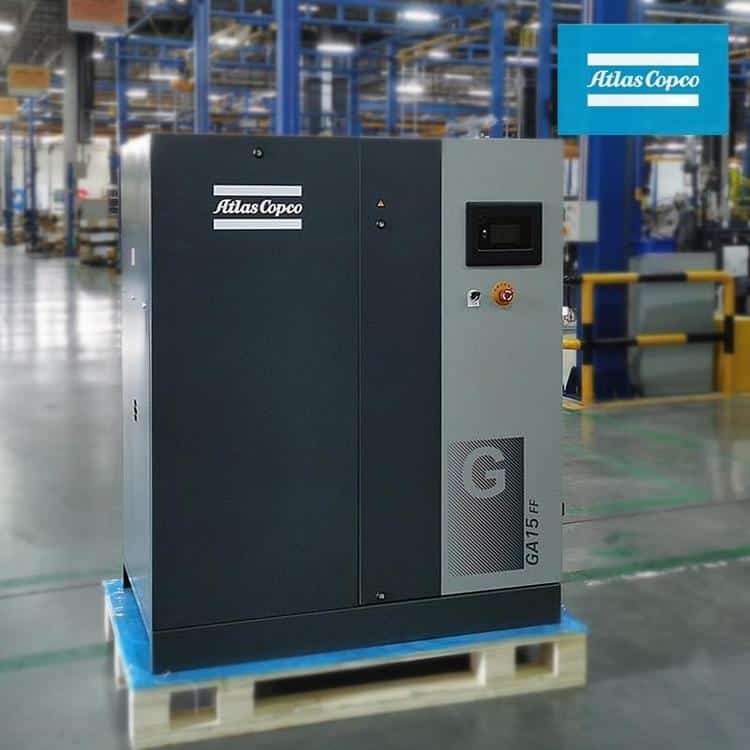
Máy tần số công nghiệp dòng GA+, công suất 5-90kw (5+, 7+, 11+, 15+, 22+, 30+, 37+, 45+, 55+, 75+, 90+).
Biến tần thông thường dòng GA VSD, công suất 7-185kw (5, 7, 11, 15, 22, 30, 37, 45, 55, 75, 90, 110, 132, 160, 185).
Nam châm vĩnh cửu chuyển đổi tần số GA VSD+ series, công suất 7-185kw (5, 7, 11, 15, 22, 30, 37, 45, 55, 75, 90, 110, 132, 160, 185).
Nam châm vĩnh cửu chuyển đổi tần số dòng GA VSDIMP, công suất 7-110kw (5, 7, 11, 15, 22, 30, 37, 45, 55, 75, 90, 110).
Bôi trơn bằng nước không dầu tần số dòng AQ, công suất 15-55kw (15, 18, 22, 30, 37, 45, 55).
Frequency conversion oil-free water lubrication AQ VSD series, power 15-55kw (15, 18, 22, 30, 37, 45, 55).
Oil-free scroll machine SF series, power 1-22kw (1, 2, 4, 6, 8, 11, 15, 17, 22).
Frequency conversion oil-free dry screw ZT VSD series, power 15-185kw (15, 18, 22, 30, 37, 45, 55, 75, 90, 110, 132, 160, 185).
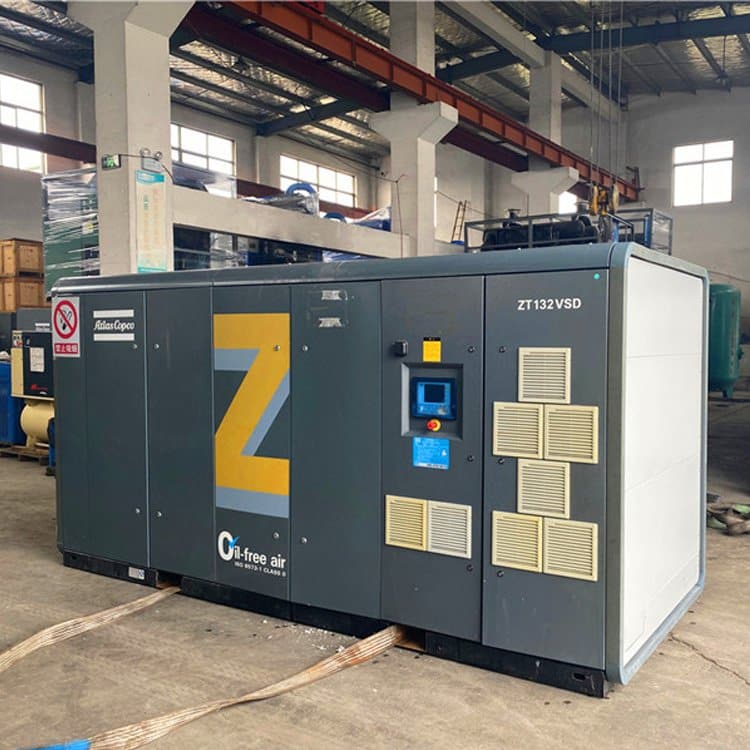
Power frequency oil-free dry screw ZT series, power 15-185kw (15, 18, 22, 30, 37, 45, 55, 75, 90, 110, 132, 160, 185).
Power frequency oil-free dry screw ZR series, power 15-185kw (15, 18, 22, 30, 37, 45, 55, 75, 90, 110, 132, 160, 185).
XAS: single-stage compression, low wind pressure around 4~13 bar.
XRV: Two-stage compression, high wind pressure.
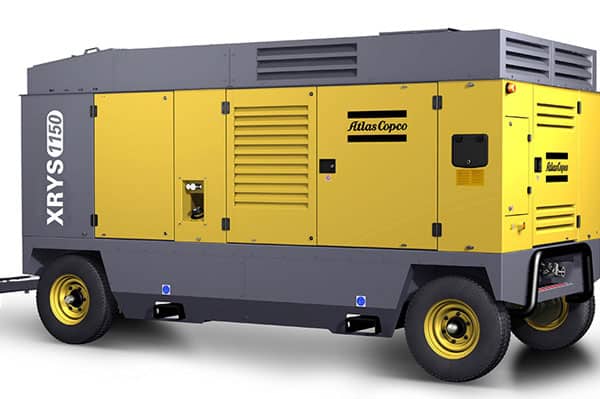
SF series oil-free scroll compressor: flow rate 0.16~1.2m/min, power 1.5~22KW, exhaust pressure 8bar, 10bar.
FX series refrigerated dryer: flow rate 0.42~74.2m3/min.
DD/PD/QD series precision filter: flow rate 0.54m3/min~432m3/min.
IV. Interpreting Atlas Copco Air Compressor Specifications
Atlas air compressors are designed to meet a range of application needs, and their specifications provide important information about their performance capabilities. Understanding Atlas air compressor specifications is crucial when selecting the right compressor for your needs.
Trong phần này, chúng ta sẽ thảo luận về các thông số kỹ thuật máy nén khí Atlas phổ biến nhất, bao gồm mã lực, CFM, PSI, kích thước bình chứa, chu kỳ làm việc, điện áp và pha. Chúng tôi sẽ giải thích ý nghĩa của từng thông số kỹ thuật, nó ảnh hưởng như thế nào đến hiệu suất của máy nén và những điều cần cân nhắc khi chọn máy nén dựa trên thông số kỹ thuật đó.
A. Mã lực
Mã lực là thước đo công suất đầu ra của động cơ máy nén khí Atlas. Nó xác định mức độ công việc mà động cơ có thể thực hiện, điều này ảnh hưởng trực tiếp đến khả năng tạo ra khí nén của máy nén. Khi xem xét xếp hạng mã lực của máy nén khí Atlas, có một số yếu tố quan trọng cần lưu ý.
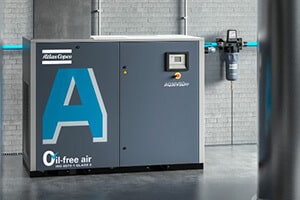
First, the horsepower rating should be appropriate for the type of application you will be using the compressor for. For example, a small air compressor with a horsepower rating of 1-2 horsepower may be suitable for small tasks such as powering airbrushes, while a larger compressor with a horsepower rating of 5-10 horsepower would be better suited for heavy-duty tasks such as sandblasting or powering pneumatic tools.
Thứ hai, mức mã lực có thể ảnh hưởng đến khả năng duy trì luồng khí nén ổn định của máy nén. Máy nén có công suất mã lực thấp hơn có thể gặp khó khăn trong việc duy trì áp suất không khí ổn định khi hoạt động ở công suất tối đa, trong khi máy nén có công suất cao hơn có thể tạo ra khí nén hiệu quả và ổn định hơn.
Thứ ba, mức mã lực có thể ảnh hưởng đến mức tiêu thụ năng lượng của máy nén. Máy nén có công suất mã lực cao hơn thường sẽ tiêu thụ nhiều năng lượng hơn, điều này có thể dẫn đến chi phí vận hành cao hơn theo thời gian. Tuy nhiên, máy nén mã lực cao hơn cũng có thể thực hiện các nhiệm vụ nhanh hơn và hiệu quả hơn, điều này có thể bù đắp mức tiêu thụ năng lượng cao hơn.
B. CFM (feet khối mỗi phút)
CFM là viết tắt của feet khối mỗi phút và là thước đo thể tích không khí mà máy nén khí Atlas có thể cung cấp mỗi phút. Xếp hạng CFM là một thông số kỹ thuật quan trọng cần xem xét khi lựa chọn máy nén khí vì nó xác định khả năng của máy nén để cung cấp năng lượng cho các công cụ khí nén, bơm lốp hoặc thực hiện các nhiệm vụ khác cần khí nén.
Khi xem xét xếp hạng CFM của máy nén khí Atlas, có một số yếu tố cần lưu ý. Đầu tiên, xếp hạng CFM phải phù hợp với loại ứng dụng bạn sẽ sử dụng máy nén. Ví dụ: một máy nén nhỏ có xếp hạng CFM là 2-3 CFM có thể phù hợp cho các công việc như bơm lốp hoặc cấp nguồn cho chổi khí, trong khi một máy nén lớn hơn có xếp hạng CFM là 10-15 CFM sẽ phù hợp hơn cho các công việc nặng nhọc. chẳng hạn như phun cát hoặc cung cấp năng lượng cho các công cụ khí nén.
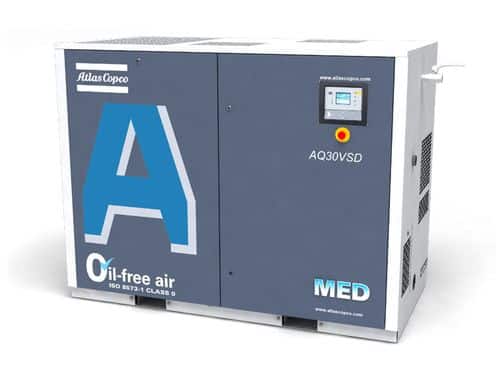
Thứ hai, xếp hạng CFM có thể ảnh hưởng đến khả năng duy trì áp suất không khí ổn định của máy nén. Nếu xếp hạng CFM không đủ cho nhiệm vụ hiện tại, máy nén có thể gặp khó khăn trong việc duy trì áp suất không khí ổn định, điều này có thể dẫn đến giảm hiệu suất.
Thứ ba, xếp hạng CFM cũng có thể ảnh hưởng đến chu kỳ làm việc của máy nén. Chu kỳ làm việc đề cập đến khoảng thời gian mà máy nén có thể hoạt động liên tục trước khi cần nghỉ ngơi. Nếu xếp hạng CFM không đủ cho nhiệm vụ hiện tại, máy nén có thể phải làm việc nhiều hơn để tạo ra lượng khí nén cần thiết, điều này có thể khiến máy quá nóng và cần thời gian nghỉ thường xuyên hơn.
C. PSI (cân trên inch vuông)
PSI là viết tắt của pound trên inch vuông và là thước đo áp suất của khí nén mà máy nén khí Atlas có thể tạo ra. Xếp hạng PSI là một thông số kỹ thuật quan trọng cần xem xét khi chọn máy nén khí vì nó xác định khả năng của máy nén để cung cấp năng lượng cho các công cụ khí nén, bơm lốp hoặc thực hiện các nhiệm vụ khác cần khí nén.
Khi xem xét xếp hạng PSI của máy nén khí Atlas, có một số yếu tố cần lưu ý. Đầu tiên, xếp hạng PSI phải phù hợp với loại ứng dụng bạn sẽ sử dụng máy nén. Ví dụ: một máy nén nhỏ có định mức PSI là 90-120 PSI có thể phù hợp cho các công việc như bơm lốp hoặc cấp nguồn cho chổi khí, trong khi một máy nén lớn hơn có định mức PSI là 150-200 PSI sẽ phù hợp hơn cho các công việc nặng nhọc. chẳng hạn như phun cát hoặc cung cấp năng lượng cho các công cụ khí nén.
Thứ hai, xếp hạng PSI có thể ảnh hưởng đến khả năng duy trì áp suất không khí ổn định của máy nén. Nếu định mức PSI không đủ cho nhiệm vụ hiện tại, máy nén có thể gặp khó khăn trong việc duy trì áp suất không khí ổn định, điều này có thể dẫn đến giảm hiệu suất.
Thứ ba, xếp hạng PSI cũng có thể ảnh hưởng đến chu kỳ làm việc của máy nén. Chu kỳ làm việc đề cập đến khoảng thời gian mà máy nén có thể hoạt động liên tục trước khi cần nghỉ ngơi. Nếu định mức PSI không đủ cho nhiệm vụ hiện tại, máy nén có thể phải làm việc nhiều hơn để tạo ra lượng khí nén cần thiết, điều này có thể khiến máy quá nóng và cần thời gian nghỉ thường xuyên hơn.
D. Kích thước bể
Kích thước bình chứa của máy nén khí Atlas đề cập đến thể tích không khí có thể được lưu trữ trong bình chứa của máy nén khí. Kích thước bình chứa là một thông số kỹ thuật quan trọng cần xem xét khi lựa chọn máy nén khí vì nó quyết định khả năng của máy nén trong việc duy trì nguồn cung cấp khí nén ổn định cho các công việc đòi hỏi luồng khí liên tục.
Khi xem xét kích thước bình chứa của máy nén khí Atlas, có một số yếu tố cần lưu ý. Đầu tiên, kích thước bể phải phù hợp với loại ứng dụng bạn sẽ sử dụng máy nén. Ví dụ, kích thước bình nhỏ hơn có thể phù hợp cho các công việc như bơm lốp hoặc cấp nguồn cho chổi khí, trong khi kích thước bình lớn hơn sẽ phù hợp hơn cho các công việc nặng nhọc như phun cát hoặc cung cấp năng lượng cho các công cụ khí nén cần luồng khí nén liên tục.
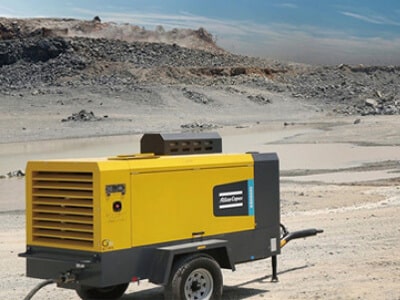
Thứ hai, kích thước bể có thể ảnh hưởng đến chu kỳ làm việc của máy nén. Chu kỳ làm việc đề cập đến khoảng thời gian mà máy nén có thể hoạt động liên tục trước khi cần nghỉ ngơi. Kích thước bình lớn hơn có thể làm tăng chu kỳ làm việc của máy nén, vì nó cho phép lưu trữ và sử dụng một lượng khí nén lớn hơn trong thời gian dài hơn.
Thứ ba, kích thước bể cũng có thể ảnh hưởng đến yêu cầu lưu trữ và tính di động của máy nén. Kích thước bể lớn hơn có thể làm cho máy nén nặng hơn và cồng kềnh hơn, điều này có thể gây khó khăn hơn khi di chuyển hoặc cất giữ trong không gian làm việc nhỏ.
E. Chu kỳ làm việc
Chu kỳ làm việc của máy nén khí Atlas đề cập đến khoảng thời gian máy nén có thể hoạt động liên tục trước khi cần nghỉ ngơi để tránh quá nóng. Chu kỳ làm việc là một thông số kỹ thuật quan trọng cần xem xét khi lựa chọn máy nén khí vì nó quyết định khả năng hoạt động hiệu quả của máy nén trong một khoảng thời gian dài.
Khi xem xét chu kỳ hoạt động của máy nén khí Atlas, có một số yếu tố cần lưu ý. Đầu tiên, chu kỳ làm việc phải phù hợp với loại ứng dụng mà bạn sẽ sử dụng máy nén. Ví dụ: máy nén có chu kỳ làm việc ngắn hơn có thể phù hợp cho các công việc không liên tục hoặc công việc nhẹ như cấp nguồn cho chổi khí hoặc bơm lốp, trong khi máy nén có chu kỳ làm việc dài hơn sẽ phù hợp hơn cho các công việc nặng nhọc như cấp nguồn cho các công cụ khí nén. hoặc phun cát.
Thứ hai, chu kỳ làm việc có thể ảnh hưởng đến hiệu suất và tuổi thọ của máy nén. Nếu vượt quá chu kỳ làm việc, máy nén có thể quá nóng và bị hỏng, dẫn đến giảm hiệu suất hoặc thậm chí hỏng hoàn toàn. Vì vậy, điều quan trọng là chọn máy nén có chu kỳ làm việc phù hợp với nhu cầu của bạn để đảm bảo rằng nó có thể hoạt động hiệu quả và hiệu quả trong thời gian dài.
Thứ ba, chu kỳ làm việc của máy nén cũng có thể ảnh hưởng đến mức tiêu thụ điện năng của máy nén. Nếu máy nén hoạt động trong thời gian dài, nó có thể tiêu thụ nhiều điện năng hơn và tăng chi phí năng lượng của bạn. Do đó, điều quan trọng là chọn máy nén có chu kỳ làm việc phù hợp với nhu cầu của bạn đồng thời xem xét hiệu quả sử dụng năng lượng của nó.
F. Điện áp và pha
Điện áp và pha của máy nén khí Atlas đề cập đến các yêu cầu về điện cần thiết để cấp nguồn cho máy nén. Điện áp là thước đo điện thế giữa hai điểm, trong khi pha là số lượng đường dây điện được sử dụng để cung cấp điện cho máy nén.
Khi xem xét điện áp và pha của máy nén khí Atlas, có một số yếu tố cần lưu ý. Đầu tiên, điện áp và pha phải phù hợp với nguồn điện có sẵn trong không gian làm việc của bạn. Điều quan trọng là phải đảm bảo rằng các yêu cầu về điện của máy nén phù hợp với điện áp và pha của nguồn điện để đảm bảo máy nén có thể hoạt động hiệu quả và an toàn.
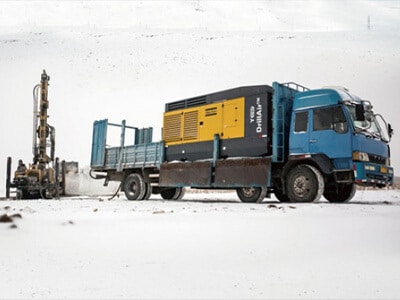
Thứ hai, điện áp và pha có thể ảnh hưởng đến hiệu suất và mức tiêu thụ điện của máy nén. Máy nén có điện áp và pha cao hơn có thể hoạt động hiệu quả hơn và cung cấp nhiều năng lượng hơn so với máy nén có điện áp và pha thấp hơn. Tuy nhiên, điều quan trọng là phải đảm bảo rằng nguồn điện trong không gian làm việc của bạn có thể hỗ trợ các yêu cầu về điện áp và pha cao hơn của máy nén.
Thứ ba, điện áp và pha có thể ảnh hưởng đến chi phí vận hành máy nén. Máy nén có yêu cầu về điện áp và pha cao hơn có thể tiêu thụ nhiều điện năng hơn và dẫn đến chi phí năng lượng cao hơn so với máy nén có yêu cầu về điện áp và pha thấp hơn.
V. Lựa Chọn Model Máy Nén Khí Atlas Copco Phù Hợp
a: Các yếu tố cần xem xét khi chọn mô hình
Khi chọn đúng mẫu máy nén khí Atlas, có một số yếu tố cần xem xét, bao gồm:
1. Loại ứng dụng: Hãy xem xét loại ứng dụng mà bạn sẽ sử dụng máy nén. Nếu bạn định sử dụng nó cho các công việc nhẹ nhàng như cung cấp năng lượng cho chổi khí hoặc bơm lốp, máy nén nhỏ hơn có thể phù hợp. Nếu bạn định sử dụng nó cho các nhiệm vụ nặng nề như cấp nguồn cho các công cụ khí nén hoặc phun cát, có thể cần một máy nén lớn hơn với xếp hạng CFM và PSI cao hơn.
2. Không gian làm việc có sẵn: Hãy xem xét không gian có sẵn trong không gian làm việc của bạn và chọn một máy nén phù hợp thoải mái và cung cấp đủ thông gió.
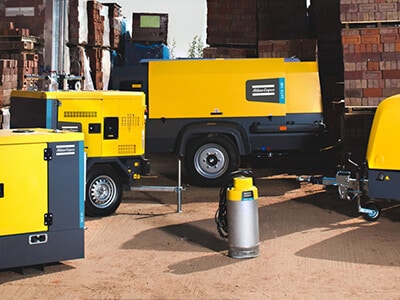
3. Nguồn điện: Xem xét các yêu cầu về điện áp và pha của máy nén và đảm bảo rằng chúng phù hợp với nguồn điện có sẵn trong không gian làm việc của bạn.
4. Ngân sách: Xem xét ngân sách của bạn và chọn máy nén cung cấp các tính năng và thông số kỹ thuật cần thiết cho nhu cầu cụ thể của bạn đồng thời phù hợp với ngân sách của bạn.
5. Danh tiếng thương hiệu: Hãy xem xét danh tiếng của thương hiệu máy nén khí Atlas và đọc các đánh giá từ những người dùng khác để đảm bảo rằng bạn đang mua một máy nén chất lượng cao và đáng tin cậy.
VI. Kết luận và nhận danh mục máy nén Atlas Copco
Tóm lại, máy nén khí Atlas là công cụ thiết yếu cho nhiều ứng dụng. Khi chọn máy nén khí Atlas, hãy xem xét loại ứng dụng, không gian làm việc sẵn có, nguồn điện, ngân sách và danh tiếng thương hiệu. Bằng cách tính đến các yếu tố này, bạn có thể chọn máy nén cung cấp các tính năng và thông số kỹ thuật cần thiết cho nhu cầu cụ thể của mình.
Nhìn chung, việc chọn đúng máy nén khí Atlas và bảo trì đúng cách có thể giúp bạn tận dụng tối đa khoản đầu tư của mình và đảm bảo rằng máy nén của bạn cung cấp hiệu suất ổn định và đáng tin cậy trong nhiều năm tới.
Yscompressor là nhà phân phối ủy quyền của Atlas tại Trung Quốc, chúng tôi có thể mua máy nén khí Atlas với giá cạnh tranh từ nhà máy của Atlas tại Trung Quốc, bạn có thể liên hệ với chúng tôi để có danh mục và báo giá máy nén khí Atlas, vui lòng liên hệ ngay với chúng tôi.




